After spending 10 days in Nepal with my parents for holidays, I arrived back in Singapore on the 19th of July. Instead of writing my travel experience in the usual journal format, I decided to spilt this post into different sections - cityscape, scenery, transportation system, food, culture, people and others.
Cityscape:
Kathmandu, the capital of Nepal, is a historical city. At around 1400m above sea level, Kathmandu is filled with endless rows of 2-3 stories shophouses, some of them more than 100 years old, unlike the jungle of towering skyscrapers that we are see so often in Singapore or other metropolitan cities, In fact I haven't seen any building taller than 10 stories apart from a tower, which according our tour guide is the tallest structure in Kathmandu. The cityscape probably resembles Singapore in the 1960s. Crooked windows and huge prominent cracks in some of these surviving old buildings are scars of the destruction of a devastating earthquake about 70 years ago (if I remember what my guide said correctly). Peering out from her exquisitely carved wooden window which seemed on the verge of giving way, an old lady watched us strolling through the streets of the city, seemingly nonchalant about the danger of living in such a dilapidated building. It was definitely to my surprise that such buildings were still inhabited. The people continue to do so because they simply cannot afford a better place.
(Above: Patan Dubar Square)
Transportation System:
I think the road conditions in Nepal are rather similar to that in India. You can see cows walking and sitting in the middle of roads and vehicles are expected to give way to them as they are considered sacred in the Hindu religion, which comprises around 80% of the population. The drivers in Nepal seem to have a penchant of sounding the horn, as frequent as every 5 seconds, and their horns even have melodies, like the sound of trumpets. Given the chaotic traffic conditions where motorists weave in and out of lanes ever so frequently even in narrow 2-way lanes, coupled with the fact that animals and people also walk on the roads, such incessant horning is understandable. Nevertheless sometimes I wonder perhaps the sounding of the horn is a form of greeting by cheeky drivers. Traveling on the roads by vehicle can be quite a bumpy ride as not all the roads are tarred or properly maintained, with potholes and rocks all over the roads, especially the mountain roads.
Strikes are also very common in Nepal and I was 'lucky' enough to experience the transportation strikes first-hand. Our tour van was caught in a massive traffic jam about 3km long and after waiting for around 3 hours, we decided to haul our luggage and walk on foot. At the site of the blockade by the protesters, the cameraman of a television crew filmed us dragging our luggage amid stares by onlookers, protesters and the police. Not long after we passed the blockade by foot, the strike ended, leading me to wonder if the sight of tourists being affected by the strike caused the protestors to relent. For those who do not know, the tourism industry is one of the largest economic sector in Nepal. Thus, it is of utmost importance for the Nepalese to ensure a quality experience for the tourists during their stay.
(Above: The crowd of protesters marching off)
(Above: Me dragging my luggage)
Scenery:
(Above: Hilly slopes and rice fields in Nagarkot)
We took the Yeti Airlines Everest Flight on 13/07/08. The view of the Himalayan mountain ranges is breath-taking.
(Above: Takeoff from Kathmandu Airport for the Everest Flight on board Yeti Air)
(Above: Picturesque view of the Himalayan ranges)
(Below: A slide show of the pictures taken from the window and cockpit of the plane. The mountains in the pictures are actually larger than they seem as some parts of the mountains are covered by cloud, so you can only see the peaks clearly, much like icebergs.)
The traditional Nepalese food is shown in the first picture. Luckily, we also had other types of food in Nepal apart from the usual dahl and chapati which is not really suited for my taste buds.
(Above: The wedding ceremony site)
People:
Most of the Nepalese people that I encountered are friendly and would greet tourists with 'Namaste'. We were lucky to have a very friendly, helpful and experienced tour guide, Mr Jeevan.
Others:
Below is a video clip of an ayurvedic 'singing' bowl, so called because it resonates after being hit or rubbed with a wooden stick wrapped with leather (shown in the video). In the video, you can see the water spraying about at four sides along the circumference in the bowl and rotates with the encircling motion of the stick. My guess is that the phenomenon is caused by standing waves in the water created due to the vibrations in the bowl. The four sides from which the water spray originate would correspond to the anti-nodes, and the calm regions are the nodes. The person explaining the use of the ayurvedic bowl is my tour guide, Mr Jeevan.
We got cheated by a group of snake charmers in the streets of Pokhara when we took photos and a video of them, unaware of the fact that we have to pay them $4 for just a few seconds of video. Luckily our tour guide stepped in to handle the situation so we ended up paying $1.





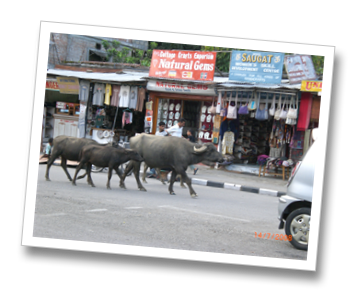
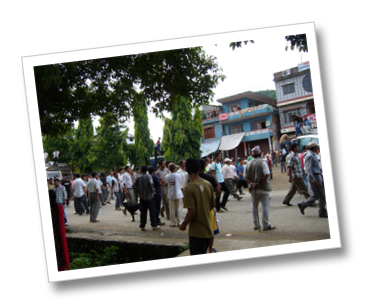
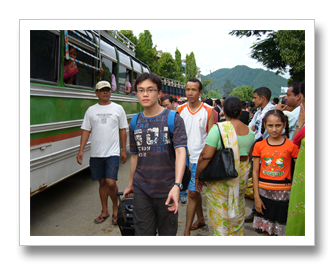

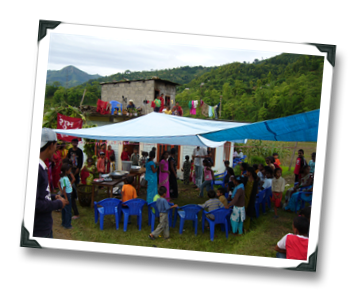

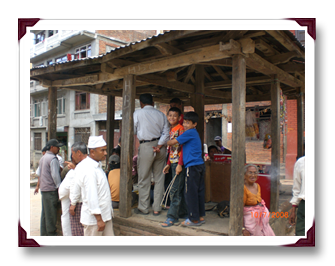
No comments:
Post a Comment